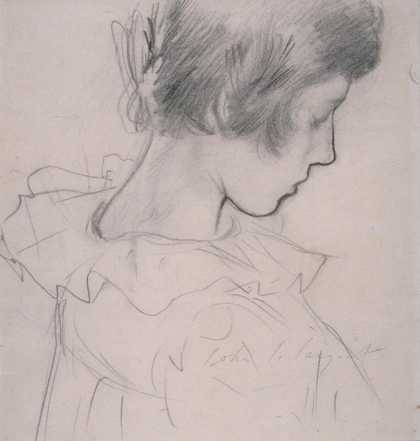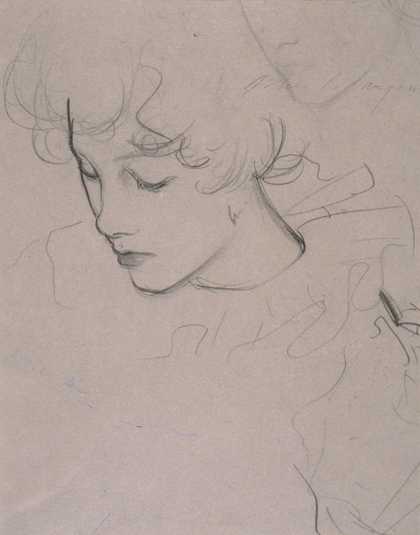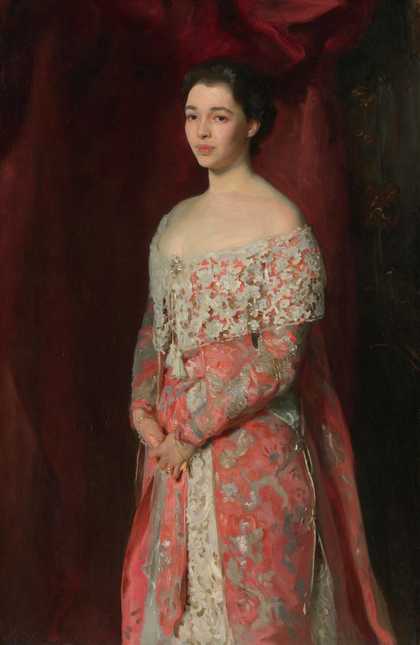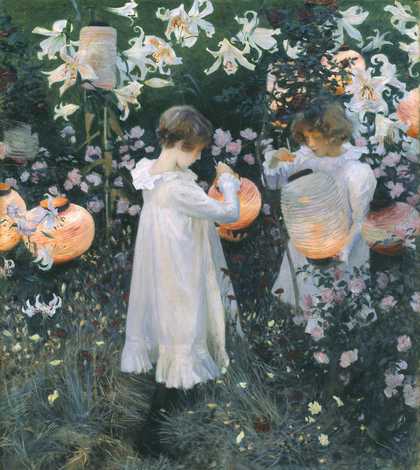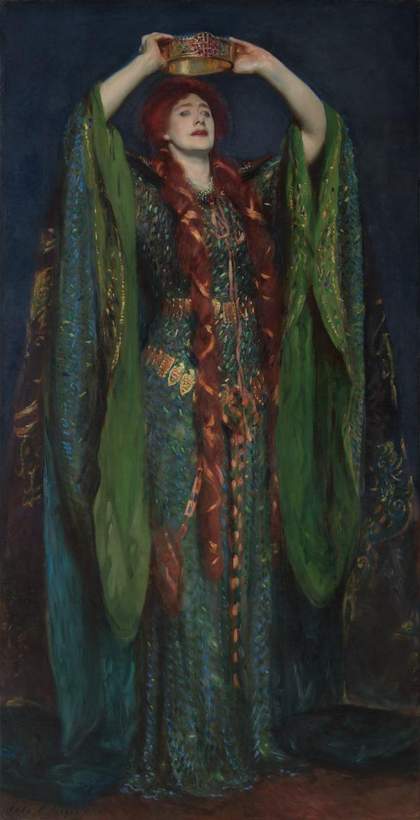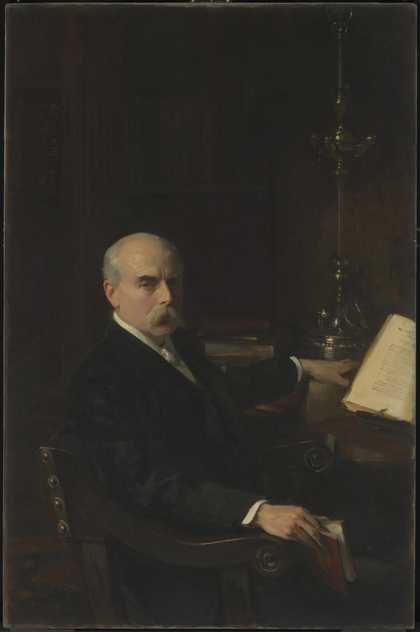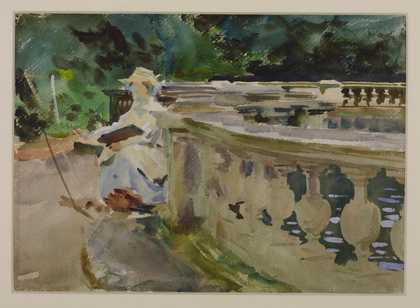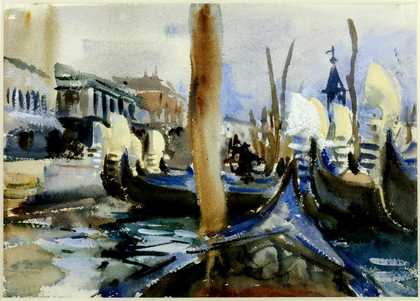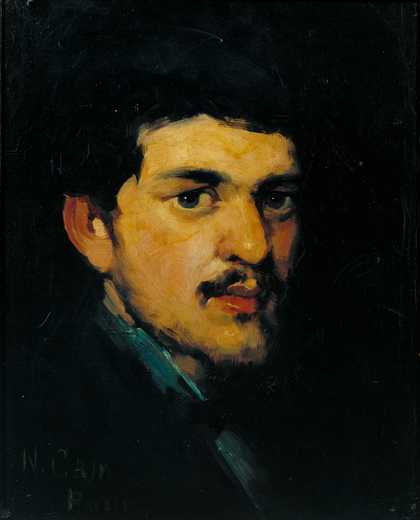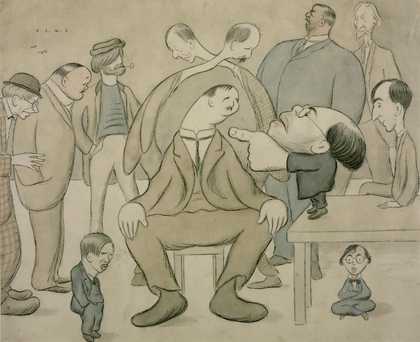Historic and Modern British Art
Artist biography
Sargent exhibited at the Royal Academy and the Grosvenor Gallery from 1882, and with the New English Art Club, of which he was a founding member, from 1886. He held a one-man exhibition at the St Botolph Club, Boston, Massachusetts in 1888. He exhibited at Knoedler's, New York in 1909 and 1912. He was made an Associate of the Royal Academy in 1894, and a full member in 1897. His murals for the Boston Public Library were begun in 1891. He travelled widely in Europe, and visited the Holy Land in 1905-6.
Sargent's international reputation as a portraitist reached its peak in the 1890s and early 1900s, and he painted many of the distinguished personalities of his day, including the actress Dame Ellen Terry (Tate Gallery N02053), the art dealer Asher Wertheimer and his family (Tate Gallery N03705-13, T07104), Coventry Patmore and Henry James. Many of his clients were Americans: Roosevelt, Rockefeller, H.G. Marquand, and Lady Randolph Churchill. By 1910 he had given up all but the occasional portrait, devoting himself to landscapes and the murals at Boston. His most important war picture, Gassed (1919), is in the Imperial War Museum, London. A retrospective exhibition was held at the Grand Central Art Galleries, New York, in 1924. Sargent died in London. He remained an American citizen throughout his life. Memorial exhibitions of his work were held in Boston in 1925, and at the Royal Academy, Metropolitan Museum of Art, New York and Tate Gallery in 1926. Retrospective exhibitions have been held at the Whitney Museum, New York, 1986-7 and the Tate Gallery, 1998.
Further reading:
The Hon. Evan Charteris, John Sargent, London 1927
Richard Ormond, John Singer Sargent: Paintings, Drawings, Watercolours, London 1970
Patricia Hills (ed.), John
Singer Sargent, exhibition catalogue, Whitney Museum of American Art, New York 1986
Warren Adelson et. al., Sargent Abroad: Figures and Landscapes, New York and London 1997
Terry Riggs
January 1998
Wikipedia entry
John Singer Sargent (; January 12, 1856 – April 15, 1925) was an American expatriate artist, considered the "leading portrait painter of his generation" for his evocations of Edwardian-era luxury. He created roughly 900 oil paintings and more than 2,000 watercolors, as well as countless sketches and charcoal drawings. His oeuvre documents worldwide travel, from Venice to the Tyrol, Corfu, Capri, Spain, the Middle East, Montana, Maine, and Florida.
Born in Florence to American parents, he was trained in Paris before moving to London, living most of his life in Europe. He enjoyed international acclaim as a portrait painter. An early submission to the Paris Salon in the 1880s, his Portrait of Madame X, was intended to consolidate his position as a society painter in Paris but instead resulted in scandal. During the year following the scandal, Sargent departed for England, where he continued a successful career as a portrait artist.
From the beginning, Sargent's work is characterized by remarkable technical facility, particularly in his ability to draw with a brush, which in later years inspired admiration as well as criticism for its supposed superficiality. His commissioned works were consistent with the grand manner of portraiture, while his informal studies and landscape paintings displayed a familiarity with Impressionism. In later life, Sargent expressed ambivalence about the restrictions of formal portrait work and devoted much of his energy to mural painting and working en plein air. Art historians generally ignored society artists such as Sargent until the late 20th century.
The exhibition in the 1980s of Sargent's previously hidden male nudes served to spark a reevaluation of his life and work, and its psychological complexity. In addition to the beauty, sensation and innovation of his oeuvre, his same-sex interests, unconventional friendships with women and engagement with race, gender nonconformity, and emerging globalism are now viewed as socially and aesthetically progressive and radical.
This biography is from Wikipedia under an Attribution-ShareAlike Creative Commons License. Spotted a problem? Let us know.
Read full Wikipedia entry

